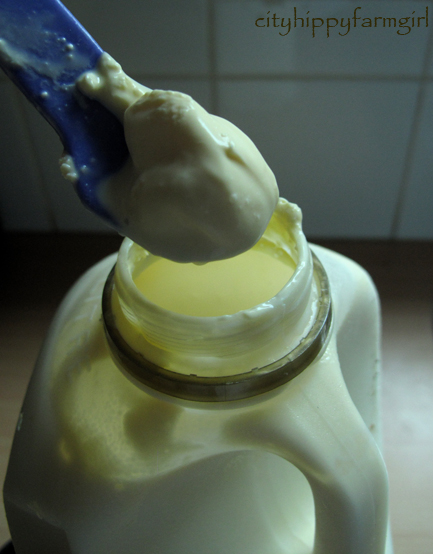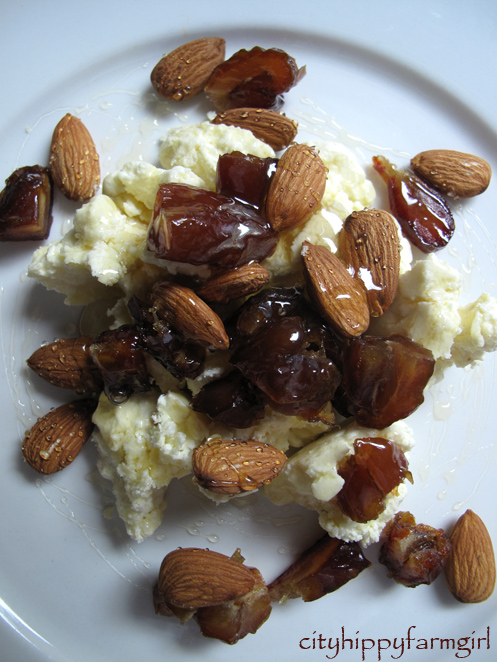I recently bought unhomogenised milk. It had been so long since I had last seen it, that I just stood there and marvelled at it. A layer of cream sitting on the top, the colour, and the little molecules of fat sitting on top of my tea. It really was worthy of marvelling at…sitting quietly looking into my tea with a contented smile and a slight raise of the eyebrows.
So what does homogenised mean? In a nut shell, it means it’s all been mixed up. All the fat and the milk has been mixed together, so when you buy it, it just comes out straight and white. Why is most milk homogenised? Because it looks better…and that’s the only reason.
There is a lot to be said about really great fresh milk. There is also a lot be said about inferior milk that is sold at really cheap prices.* Availability is our problem. I can’t always get to somewhere that sells different brand milks. It’s frustrating that the leading super market brands don’t have much variety happening in their milk section. Especially as one of our leading generic brands smells and tastes like mouse. I thought I was the only one to imagine it, but a friend backed me up. Sipping on some milk some time ago and all I could think about was long pink tails, and tiny furry bottoms…No mousey milk for me please.
Looking at my unhomogenised milk, pondering on all the milky goodness I could be making from it. Cheese, yoghurt, ice cream, scones, breads, all using some form of the milk…
Next up I wanted to try making ricotta. Following The Real Food Companion instructions I had my lovely milk (Over the Moon), sieve, white vinegar, pot and wooden spoon all ready. I didn’t have two litres of milk so I quartered the recipe. I knew it wouldn’t result in much but as a first run, I didn’t want to waste a drop of the good stuff either on any mistakes. 500mls of milk in the pot, bring it to a foam (or 90C, not yet boiling) and then add 2 teaspoons of white vinegar to create the curds. There was a little bit of curdling action, but not a lot. The whey hadn’t separated enough. Frowning in to my pot I decided to heat it up again. 1/2 a tps more?…oops my hand slipped, make it 1 tsp more. A little gentle stir and instant separation. Ahhh, that’s better. Gently scooping it out to some muslin and a sieve, I’m left with ricotta. Really, rubbery ricotta…
Checking with the local cheese bloggers Gavin and Christine, I try to work out what I did wrong. Too hot? Too much vinegar? It tasted ok, but it really was a tad rubbery. I sat on it for an hour or two and then decided that I would try it again, other wise it would bug me all day.
Second go. Left it at 2 tsp of vinegar, different milk this time and just a fraction longer on the cooking time. We are talking extra seconds cooking time, that’s all. Those extra seconds made the difference. It was softer, more delicate, and really good….and really quite easy.
(The whey that I was left with, went into some sourdoughs.)
Third time around and I’m definitely getting the hang of it. I can’t believe how easy it is to make and how I hadn’t done this before. I’m also struck by how so many really easy recipes have fallen by the way side in order for things to be convenient for people. Such simple meals that can be made with so little ingredients, if only people knew how. This is the sort of conversation topic that could be passed back and forth over and over until the cows came home, milked themselves and made their own ricotta… but for the sake of airing a little, I’ll continue.
These simple cooking lessons that could be taught to another person in an afternoon seem to be quietly slipping out the door. Things like yoghurt, ricotta, labneh, mascarpone, sour cream, butter and all their lovely by-products, are simple to make and yet they can be quite expensive to buy. Not to mention all the plastic tubs that you are buying along with the products. Some would argue that they are recyclable, and yes they are. But if you can spare an extra 5 minutes to make a kilo worth of yogurt, than you have just saved 52 plastic kilo tubs of yoghurt per year, (going on a kilo a week, even more if you are eating daily individual tubs.) Visualising how much that would be for a single person or a family, in a life time is….sobering. No more plastic tubs and saving a fair whack of money to boot.
Maybe a reason to go give someone a dairy cooking lesson?
What’s for lunch?
Ricotta
raw almonds
chopped dates
drizzle of honey
* For more information on Australia’s cheap milk problems please read here.
** For a different way to make ricotta and using goat milk, have a look at Linda’s The Witches Kitchen.







